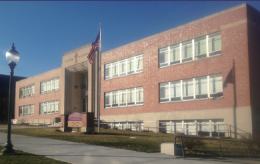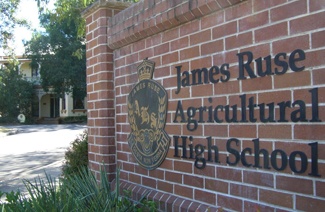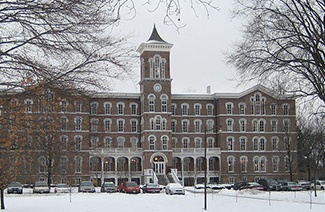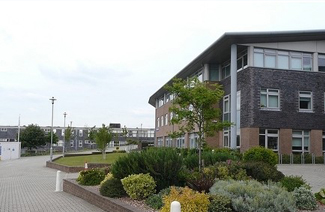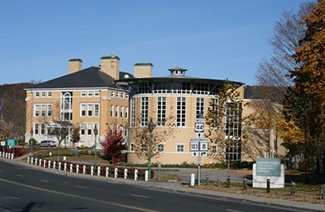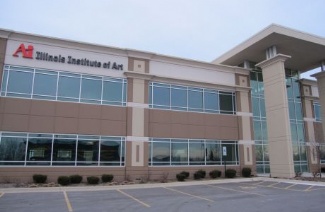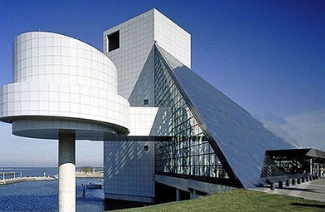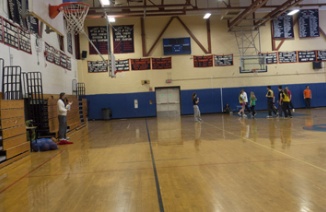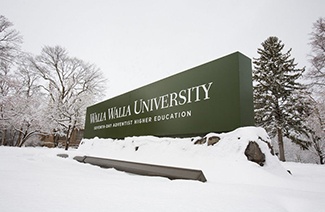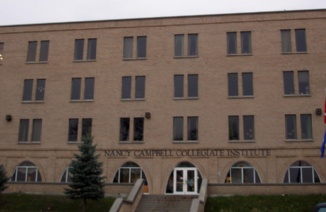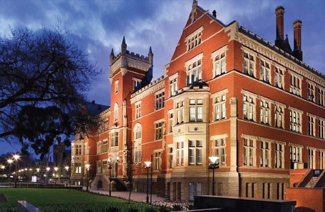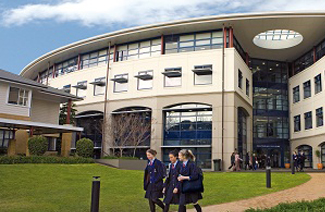雅思阅读部分的备考需要考生多加练习,为了便于大家对雅思进行备考,小编为大家带来了2017年2月11日雅思阅读预测【大范围】,一起来了解一下吧。
2017年2月11日雅思阅读预测【大范围】重点阅读题目如下:海钟表发展、茶叶的历史、地图的发展、古希腊钱币、中国古战车、库克发现新大陆、俄罗斯芭蕾舞的历史、通古期之谜、育的量化研究、幸福心理学、儿童教育哲学、拉丁语对英语的影响、画与电影、双语学习的利弊、失乐症的介绍(Amusia)、数学发展、儿童与互联网、作物生长的“摩天大厦”
为了便于大家在备考的过程中对雅思阅读进行练习,小编为大家带来了2017年2月11日雅思阅读预测【大范围】中的一篇阅读题目及答案解析,大家可以进行练习,并在练习结束后了解自己的做题情况,一起来具体的了解一下吧。
You should spend about 20 minutes on Questions 1-13, which are based on Reading Passage 1 below.
Crop-growing skyscrapers
By the year 2050, nearly 80% of the Earth’s population will live in urban centres. Applying the most conservative estimates to current demographic trends, the human population will increase by about three billion people by then. An estimated 109 hectares of new land (about 20% larger than Brazil) will be needed to grow enough food to feed them, if traditional farming methods continue as they are practised today. At present, throughout the world, over 80% of the land that is suitable for raising crops is in use. Historically, some 15% of that has been laid waste by poor management practices. What can be done to ensure enough food for the world’s population to live on?
The concept of indoor farming is not new, since hothouse production of tomatoes and other produce has been in vogue for some time. What is new is the urgent need to scale up this technology to accommodate another three billion people. Many believe an entirely new approach to indoor farming is required, employing cutting-edge technologies. One such proposal is for the ‘Vertical Farm’. The concept is of multi-storey buildings in which food crops are grown in environmentally controlled conditions. Situated in the heart of urban centres, they would drastically reduce the amount of transportation required to bring food to consumers. Vertical farms would need to be efficient, cheap to construct and safe to operate. If successfully implemented, proponents claim, vertical farms offer the promise of urban renewal, sustainable production of a safe and varied food supply (through year-round production of all crops), and the eventual repair of ecosystems that have been sacrificed for horizontal farming.
It took humans 10,000 years to learn how to grow most of the crops we now take for granted. Along the way, we despoiled most of the land we worked, often turning verdant, natural ecozones into semi-arid deserts. Within that same time frame, we evolved into an urban species, in which 60% of the human population now lives vertically in cities. This means that, for the majority, we humans have shelter from the elements, yet we subject our food-bearing plants to the rigours of the great outdoors and can do no more than hope for a good weather year. However, more often than not now, due to a rapidly changing climate, that is not what happens. Massive floods, long droughts, hurricanes and severe monsoons take their toll each year, destroying millions of tons of valuable crops.
The supporters of vertical farming claim many potential advantages for the system. For instance, crops would be produced all year round, as they would be kept in artificially controlled, optimum growing conditions. There would be no weather-related crop failures due to droughts, floods or pests. All the food could be grown organically, eliminating the need for herbicides, pesticides and fertilisers. The system would greatly reduce the incidence of many infectious diseases that are acquired at the agricultural interface. Although the system would consume energy, it would return energy to the grid via methane generation from composting non-edible parts of plants. It would also dramatically reduce fossil fuel use, by cutting out the need for tractors, ploughs and shipping.
A major drawback of vertical farming, however, is that the plants would require artificial light. Without it, those plants nearest the windows would be exposed to more sunlight and grow more quickly, reducing the efficiency of the system. Single-storey greenhouses have the benefit of natural overhead light: even so, many still need artificial lighting. A multi-storey facility with no natural overhead light would require far more. Generating enough light could be prohibitively expensive, unless cheap, renewable energy is available, and this appears to be rather a future aspiration than a likelihood for the near future.
One variation on vertical farming that has been developed is to grow plants in stacked trays that move on rails. Moving the trays allows the plants to get enough sunlight. This system is already in operation, and works well within a single-storey greenhouse with light reaching it from above: it is not certain, however, that it can be made to work without that overhead natural light.
Vertical farming is an attempt to address the undoubted problems that we face in producing enough food for a growing population. At the moment, though, more needs to be done to reduce the detrimental impact it would have on the environment, particularly as regards the use of energy. While it is possible that much of our food will be grown in skyscrapers in future, most experts currently believe it is far more likely that we will simply use the space available on urban rooftops.
Questions 1-7
Complete the sentences below.
Choose NO MORE THAN TWO WORDS from the passage for each answer.
Write your answers in boxes 1-7 on your answer sheet.
Indoor farming
1 Some food plants, including __________, are already grown indoors.
2 Vertical farms would be located in __________, meaning that there would be less need to take them long distances to customers.
3 Vertical farms could use methane from plants and animals to produce __________.
4 The consumption of __________ would be cut because agricultural vehicles would be unnecessary.
5 The fact that vertical farms would need __________ light is a disadvantage.
6 One form of vertical farming involves planting in __________ which are not fixed.
7 The most probable development is that food will be grown on __________ in towns and cities.
Questions 8-13
Do the following statements agree with the information given in Reading Passage 1?
In boxes 8-13 on your answer sheet, write
TRUE if the statement agrees with the information
FALSE if the statement contradicts the information
NOT GIVEN if there is no information on this
8 Methods for predicting the Earth’s population have recently changed.
9 Human beings are responsible for some of the destruction to food-producing land.
10 The crops produced in vertical farms will depend on the season.
11 Some damage to food crops is caused by climate change.
12 Fertilisers will be needed for certain crops in vertical farms.
13 Vertical farming will make plants less likely to be affected by infectious diseases.
以下是小编为大家带来的雅思阅读题目的答案:
Question 1
答案: tomatoes
关键词: food plants, already grown indoors
定位原文: 第2段第1句“The concept of indoor farming is not new... ”由于室内种植番茄和其他作物已经时兴一段时间了,所以室内种植的概念并不新奇。
解题思路: 找到了indoor farming ,同义替换题目的 grown indoors,自然可以找到tomatoes为答案。
Question 2
答案: urban centres
关键词: located in, less need to take them long distance to customers
定位原文: 第2段第6句“Situated in... ” 它们位于城市中心,这将大幅减少将食物运往消费者处所耗费的运输量。
解题思路: situated in相当于题目中的located in, 而 drastically reduce the amount of transportation required to bring food to consumers 相当于题目中的 less need to take them long distances to customers,同义替换,自然可以找到答案为urban centres.
Question 3
答案: energy
关键词: methane
定位原文: 第4段第6句“Although the system…” 虽然系统会消耗能量,但是它能通过作物不可食用部分的堆肥里生成的沼气将能量返还给系统网络。
解题思路: 定位methane后,通读整句后会发现return energy的energy是methane产生的。
Question 4
答案: fossil fuel
关键词: cut, agricultural vehicles
对应原文: 第4段第7句“It would also dramatically reduce fossil fuel…” 它将通过减少拖拉机、犁和航运运输的需求从而大幅度减少化石能源的使用。
解题思路: tractors是agricultural vehicles 的同义替换,dramatically reduce 同义于consumption,得出答案。
Question 5
答案: artificial
关键词: light, disadvantage
定位原文: 第5段第1句“A major drawback of…”但是,垂直农场最大的一个缺点是作物需要人造光。
解题思路: the major drawback 很好对应题目的disadvantage, 句子中又明确说明了artificial light,所以非常容易得出答案。
Question 6
答案: (stacked) trays
关键词: one form, not fixed
定位原文: 第6段第1句“One variation on… ”和第6段最后一句,“it is not certain…”垂直农场的一个已经发展成型的变化是在stacked trays(层叠式托盘)上种植作物,这些stacked trays可以在铁轨上移动。最后一句还提到:但是不确定是否在没有头顶自然光的情况下使它正常工作。
解题思路: one form 对应one variation,not fixed 和 it is not certain 是同义替换,找到grow plants in 后面的部分可以找到答案。这个题贯穿的信息在第6段一前一后,需要注意no more than two words 的要求,stacked 也可以不填写。
Question 7
答案: (urban) rooftops
关键词: the most probable development,towns and cities
定位原文: 最后一段最后一句“While it is possible that much…”然而在将来,我们的很多食物有可能是被种植在高楼大厦里,大部分专家现在相信利用在城市乡镇的屋顶上的可用空间来种植可能性更大。
解题思路: the most probable development 同义于原文的far more likely, urban 同义替换原题的towns and cities,所以这个题也很容易得出答案。
Question 8
答案: Not Given
关键词: population
定位原文: 第1段前两句提到了population。只是说了到2050年,世界上近80%的人将居住在城市中心,根据人口统计保守估计,人口将增加到30亿人。全文都在讨论farming,并没有再别处提到预测人口方法的其他话题了,因此,这个题目的答案是NG。
解题思路: 定位到原文第一段后,初步发现是NG,如果不确定,在快速浏览全文过后,可以发现第一段前两句就是本题唯一的答题区域,不用在纠结改变或者没有改变了,更可以快速确认答案。
Question 9
答案: True
关键词: human beings, destruction, food-producing land
定位原文: 第1段的第4&5句。“At present,throughout the world……”超过80%的适合种植庄稼的土地在使用中,从历史经验上而言,这其中15%由于不恰当的管理操作导致荒废。
解题思路:题目中 food-producing land 与文章第一段第四句中 the land that is suitable for raising crops 同义替换,其中15%的土地has been laid waste,这与题目中destruction的表达相一致,而根据文中表述,这15%由于 poor management practices而荒废,这实际上指的就是题目中的human beings的原因。
Question 10
答案: False
关键词: vertical farms,depend on season
定位原文: 第2段最后一句“If successfully implemented... ”如果成功实施,支持者们说,垂直农场会带来城市复苏的希望, 持续提供安全多样的食物供应(通过整年生产所有谷物),并且最终修复由于水平农业而造成损害的生态系统。
解题思路: 根据定位答题区域,可以得知,括号内的部分说到through year-round production of all crops,说明了垂直农场可以全年都使用,也就是不会受到季节的影响,这与题目中的信息相反。
Question 11
答案: True
关键词: damage to food crops;
定位原文: 第3段的第5-6句“However,more often…” 然而,通常由于快速变化的气候,情况并不如人愿。每年都会出现大洪水、持续干旱、飓风以及强烈的季风,数百万吨珍贵的作物被毁掉。
解题思路: 定位区域提到了一些作物受到破坏的原因。说道很多valuable crops 受到破坏是由于句首提到的各种气候现象,即前面所说的massive floods, long droughts, hurricanes and severe monsoons,这些都属于上一句中的 rapidly changing climate。
Question 12
答案: False
关键词: fertilizers, will be needed
定位原文: 第4段第4句“All the food…”所有作物有机自然地生长,不需要除草剂、杀虫剂和化肥。
解题思路: 定位原文后,很容易发现题目和原文信息相反。注意到eliminating the need for是“不需要”的意思。
Question 13
答案: True
关键词: less likely affected by infectious diseases
定位原文: 第4段第5句“The system…”系统将大大减少农业接触中一些传染性疾病的发生概率。
解题思路: 在12题之后,就可以清楚看到13题的答案。原文的greatly reduce the incidence of many infectious diseases 是题目的同义表达。
以上是小编为大家分享的2017年2月11日雅思阅读预测【大范围】,希望能够对大家更好的进行雅思阅读备考有帮助。
